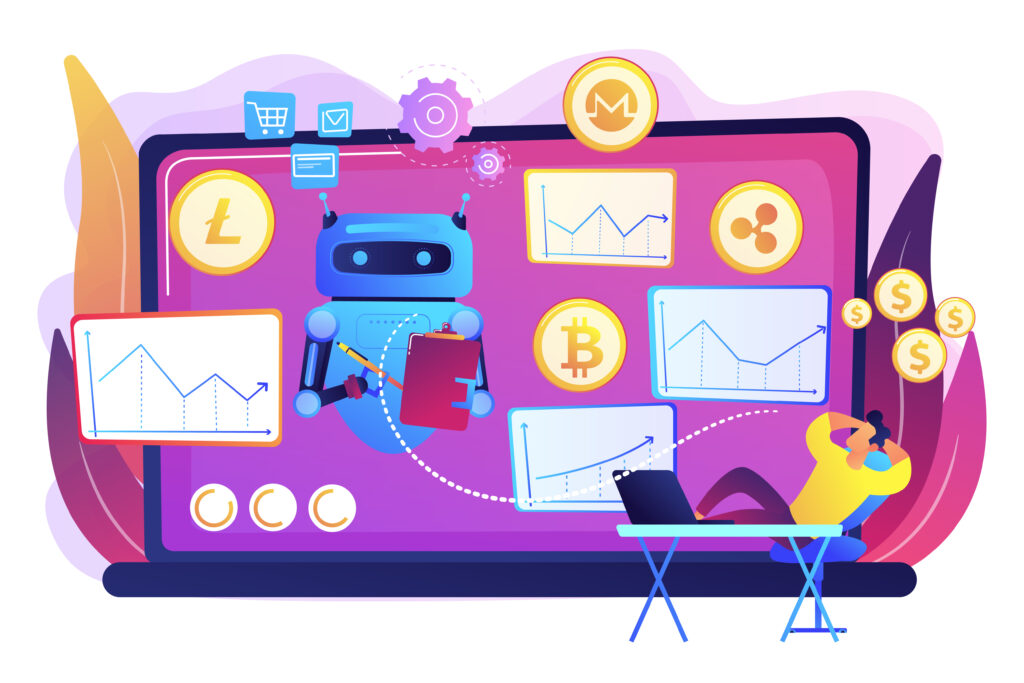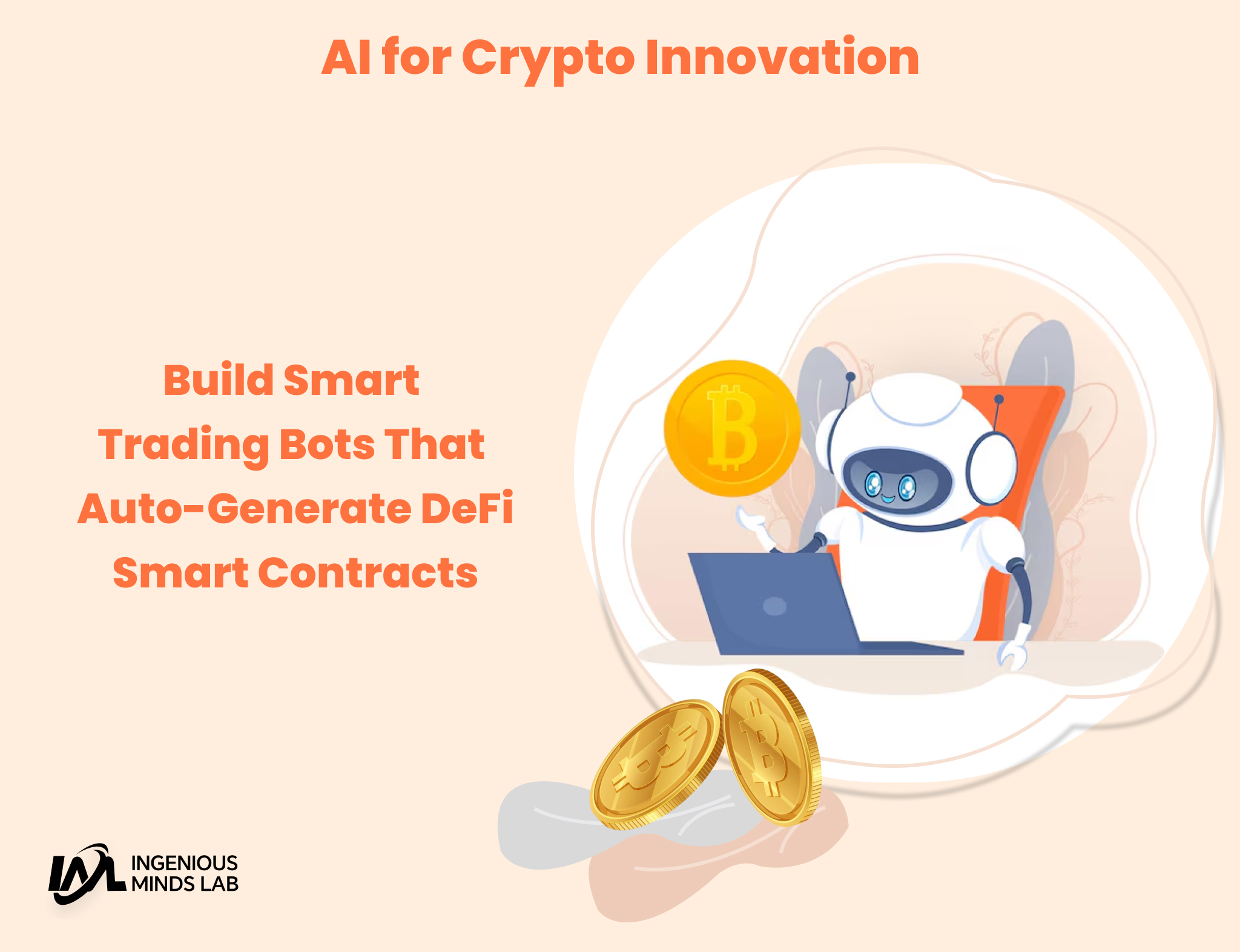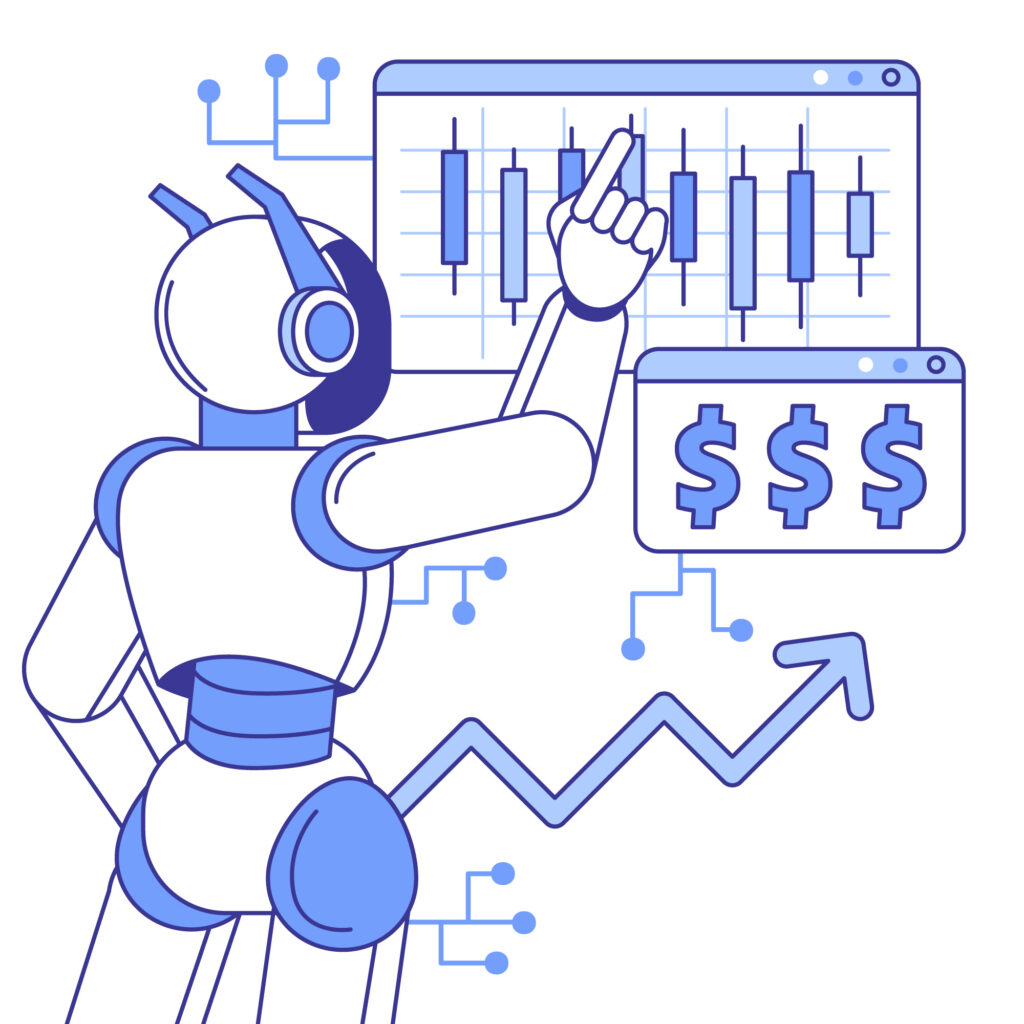Introduction
The convergence of AI and crypto in 2025 is redefining how developers and traders approach decentralised finance (DeFi). Today’s most advanced crypto bots can not only trade assets automatically but also write and deploy smart contracts on the fly. This blog explores how to build AI-enhanced trading bots that generate DeFi smart contracts, examine the tools powering this shift, and explain the opportunities and risks of this cutting-edge automation.
What Are AI-Powered Crypto Trading Bots?
AI-powered crypto trading bots use machine learning models and market data to execute trades automatically. They range from simple moving average strategies to complex arbitrage and reinforcement learning agents. When paired with blockchain APIs, these bots can go a step further—deploying smart contracts that define and control trade logic, asset movement, and DeFi interactions.
How Smart Contracts Are Auto-Generated and Audited
Large Language Models (LLMs) like GPT-4 and Google’s Gemini can now generate production-ready smart contracts in Solidity or Vyper with just a few lines of instruction. These models are also capable of auditing for vulnerabilities, identifying flaws like reentrancy, integer overflows, and logic bugs. Platforms like Workik, DefiBuilder, and OpenZeppelin’s Defender SDK streamline the process of writing, simulating, and deploying contracts safely.
Building Your First AI Trading Bot with Smart-Contract Generation
Here’s a simplified workflow to create a bot that both trades and generates contracts:
- Choose your stack: Use OpenAI Codex or Gemini for code generation; use Hardhat + Ethers.js for contract deployment; integrate with Uniswap or Sushiswap for live trading.
- Prompt the AI:
Write a Solidity contract for a time-locked liquidity vault with a 2% withdrawal fee. - Review & audit output: Run generated code through Slither or MythX to detect issues.
- Deploy via testnet: Use Hardhat + MetaMask integration to deploy.
- Bot logic: Feed trading signals from an ML model (e.g., TensorFlow, PyTorch) and trigger contract interactions based on AI decisions.
This approach creates an agent that can launch a new trading vault when volatility hits a predefined threshold.
Real-World Examples
- TokenSets: Uses smart-contract-driven trading strategies that rebalance based on market conditions.
- Workik Smart Contract Generator: Allows no-code Solidity generation and deployment.
- Singularity Finance: A community-driven project blending AI portfolio strategies with decentralized governance.
Benefits & Limitations
Benefits:
- 24/7 performance without human fatigue
- Speed in deploying or updating contracts
- Cost efficiency through automation
Limitations:
- AI hallucination risks: unpredictable or insecure outputs
- Still requires human auditing
- DeFi security remains a critical concern
Security, Compliance & Ethics
As AI bots control funds and deploy contracts, robust safety measures are essential:
- Always audit: Use tools like Slither, MythX, and OpenZeppelin Defender.
- API key management: Use vaults or encrypted storage to protect secrets.
- Regulatory review: Be aware of regional laws around autonomous finance and bot-based trading (e.g., SEC/CFTC in the U.S., MiCA in the EU).
- Ethical coding: Ensure transparency in decision-making logic and minimize data bias.
The Future of AI + Blockchain Agents

In the near future, expect autonomous agents that:
- Monitor DeFi protocols for vulnerabilities
- Auto-generate fixes and deploy patches
- Trade, rebalance, and manage portfolios end-to-end
Platforms like Movement Labs and AI-specific blockchains like SingularityNet are paving the way for decentralized, intelligent ecosystems that will likely govern next-gen financial infrastructure.
Conclusion
AI-enhanced crypto bots that generate and manage smart contracts mark a new era of programmable finance. By combining LLMs with DeFi tools, developers can automate everything from trading strategies to protocol governance. As long as we implement proper testing, audits, and ethical constraints, this convergence of AI and crypto opens the door to faster, safer, and more intelligent financial systems.
do visit my other blogs for more thoughtful informations.
- https://ingeniousmindslab.com/blogs/mobile-app-growth-and-usage-statistics/
- https://ingeniousmindslab.com/blogs/the-flutter-evolution/
- https://ingeniousmindslab.com/blogs/best-llm-tools-run-ai-models-offline/
FAQs
Q: Can AI bots really write secure smart contracts?
Yes, but human review is still essential. Always use auditing tools.
Q: Is this approach safe for real-world use?
It can be, if you limit deployment to audited testnets or live networks with monitoring.
Q: Are AI-generated contracts compliant with current DeFi regulations?
Not always. Legal review is necessary for large-scale or public-facing apps.
Q: What are the best AI models for this use?
Codex, GPT-4, Gemini Pro, and Claude 3 are currently leading in prompt-based code generation.
Q: Can this replace smart contract developers?
Not yet. But it makes them more efficient and shifts focus to higher-order tasks like architecture, governance, and audit.


I’m really enjoying the design and layout of your site.
It’s a very easy on the eyes which makes it much more pleasant for me to come here and
visit more often. Did you hire out a designer to create your theme?
Exceptional work!